What is Shatter? A Concise Guide to Understanding This Cannabis Concentrate
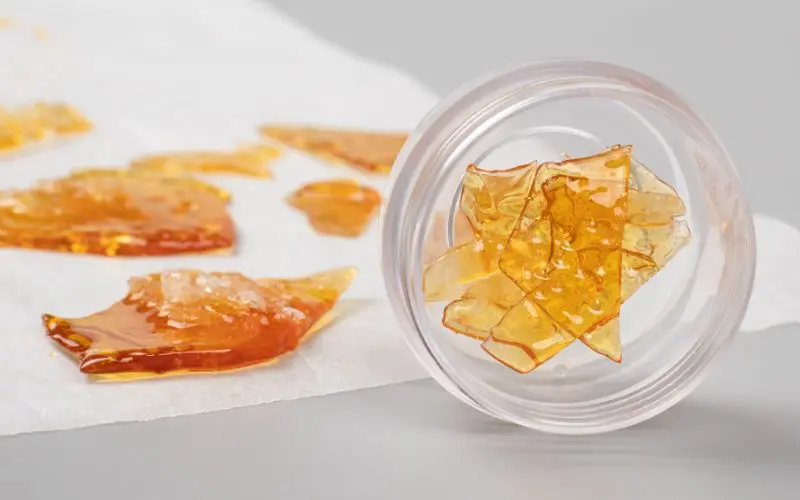
In this guide, we will look at the category these products all belong to — cannabis concentrates — and focus on one in particular: shatter.
Shatter Definition
What is Shatter? It’s is a type of cannabis extract that has gained popularity in recent years due to its high potency and unique, glass-like appearance.
It is a form of cannabis concentrate, created through a process involving the extraction of cannabinoids, including tetrahydrocannabinol (THC) and cannabidiol (CBD), as well as other essential compounds from the cannabis plant.
The result is a solid substance that can be broken into small, glass-like shards, hence the name “shatter.”
Is shatter stronger than other forms of cannabis?
Shatter is generally considered to be more potent than other forms of cannabis. Due to the extraction process, it typically has a much higher concentration of THC and other cannabinoids compared to traditional cannabis flowers.
While the potency of shatter can vary depending on the strain and production methods, it is common for this concentrate to have THC levels that range from 60% to 90%, whereas the average THC concentration in cannabis flowers is around 10% to 25%.
This makes shatter a particularly strong choice for those seeking an intense cannabis experience.
Although shatter is known for its high THC content, it is worth noting that some shatter products may also contain relatively higher levels of CBD and other cannabinoids compared to traditional cannabis flower.
This means that shatter can offer a range of effects depending on the specific balance of cannabinoids. For those seeking a less psychoactive experience, it is possible to find shatter with a more balanced ratio of THC to CBD.
However, it’s essential to research and understand the specific cannabinoid profile of the shatter product you are considering to ensure it aligns with your desired effects.
Shatter is a potent cannabis concentrate that offers a unique and powerful experience for cannabis enthusiasts seeking an elevated level of potency.
Its high concentrations of THC and other cannabinoids make it an excellent choice for those seeking a more intense experience than that offered by traditional cannabis flowers.
What Does Shatter Look Like?
When it comes to understanding shatter, it’s essential to first discuss its appearance, texture, and consistency.
As the name suggests, shatter generally resembles glass, with a transparent and smooth surface. It boasts a unique aesthetic, which helps to distinguish it from other concentrates.
Shatter can vary in colour, ranging from a light yellow to a darker amber hue. This variation typically depends on factors such as extraction method, purity, and quality.
As our eyes glide over the surface of shatter, we may also notice its texture: a perfect balance between brittle and somewhat malleable. When handled delicately, shatter can display a certain level of flexibility, while excessive force may cause it to crack or, fittingly, shatter.
A crucial aspect of shatter is its consistency, which results from the curing process. A well-cured shatter maintains its glass-like properties and the desired level of potency.
On the other hand, if the curing process is rushed or executed poorly, it can lead to shatter with an undesirable consistency, such as being too soft or sticky.
To sum up, when we examine shatter, we observe its glass-like appearance, unique texture, and consistency. We can appreciate its potential for versatility and quality based on its color, structure, and curing process. With this knowledge, we can confidently identify and select high-quality shatter for our own use.
The History of Shatter
The history of shatter can be traced back to the 1990s when cannabis enthusiasts started experimenting with different methods of extracting and concentrating the plant’s compounds.
One of these methods involved using a solvent, such as butane, to separate the cannabinoids from the plant’s material.
This led to the creation of a highly potent and pure cannabis concentrate, which eventually became known as shatter.
The name “shatter” comes from its brittle texture. When the concentrate cools and hardens, it takes on a glass-like appearance that can easily fracture or “shatter” when handled.
This unique consistency, combined with its high potency, has made shatter a popular choice among cannabis users who appreciate its distinct advantages over other forms of cannabis concentrate.
Over the years, the techniques used for producing shatter have evolved and improved. Manufacturers now use advanced equipment and closely regulated processes to ensure quality and safety.
In doing so, they continue to meet the rising demand for high-quality, potent cannabis products.
Shatter has become a valuable addition to the cannabis market, offering users a powerful alternative to traditional flower and other concentrates.
With its impressive potency and refined appearance, it’s no wonder that shatter has gained a strong following in the ever-evolving world of cannabis.
What’s The Difference Between Shatter and Wax
Shatter and wax are both popular forms of cannabis concentrate, but they have some distinct differences. In this section, we will compare the two and help you understand their unique properties.
Shatter gets its name from its brittle, glass-like texture that can easily break or “shatter” upon handling.
On the other hand, wax has a softer, opaque, and more malleable texture. It can come in various consistencies, such as crumbly “honeycomb” or smooth “budder.”
Wax is also a potent cannabis concentrate, containing similar cannabinoid concentrations as shatter. However, the manufacturing process for wax involves agitating the cannabis oil during the extraction process, creating its characteristic consistency.
Wax can be consumed through dabbing as well but can also be used in portable vaporizers designed specifically for concentrates or sprinkled on top of cannabis flower for an enhanced smoking experience.
Both shatter and wax are forms of cannabis concentrate derived from hash oil, which is extracted from the cannabis plant using various methods.
While they share similarities in potency and consumption methods, their main difference lies in their physical properties and production processes.
In terms of flavour and aroma, some users may find that shatter has a more intense and pure terpene profile, while wax can have a slightly muted taste due to the agitation process.
However, this distinction can vary depending on the quality and production methods of the specific concentrate.
What is CBD Shatter?
CBD shatter is a type of highly concentrated CBD extract that has a glass-like, brittle texture. It is made using a process that isolates CBD from other cannabinoids often found in the cannabis plant, such as THC.
The result is a high-potency cannabis concentrate that contains upwards of 95% CBD, making it extremely beneficial for those seeking the therapeutic properties of CBD without the psychoactive effects of THC.
CBD shatter, like other concentrates, is usually consumed through dabbing or vaporizing. This method of consumption allows for the rapid absorption of CBD into the bloodstream, providing fast and effective relief for a variety of symptoms and ailments.
Since it is so potent, only a small amount is needed to experience its effects, allowing for a more efficient and cost-effective method of consuming CBD.
The primary advantage of CBD shatter lies in its level of purity and potency. With the absence of THC, users can receive the full range of therapeutic benefits that CBD has to offer without experiencing any psychoactive effects.
This makes it a great option for individuals who want to reap the benefits of cannabis without the high associated with THC.
How To Make Shatter
Shatter, a type of cannabis concentrate, is made through a process that extracts cannabinoids and terpenes from the cannabis plant.
The most common methods for producing shatter involve the use of solvents such as butane, carbon dioxide (CO2), or ethanol.
In this section, we’ll discuss the main steps in the production of shatter, focusing on the popular butane hash oil (BHO) method.
To produce BHO, we start with high-quality cannabis plant material as the starting material. It’s essential to use well-cured and properly stored cannabis to ensure that the final product is potent and pure.
The first step in the process is to grind the plant material to maximize the surface area, allowing the solvent to fully penetrate and dissolve the desirable compounds.
Next, we employ a closed-loop extraction system, where butane or another hydrocarbon solvent is passed through the ground cannabis material.
The solvent dissolves the cannabinoids like THC and CBD, as well as the terpenes and other compounds that provide flavour and aroma.
After the solvent has been passed through the cannabis material, it’s collected in a separate chamber, taking the dissolved compounds with it.
At this stage, the mixture needs to be purged of the solvent, a process called purging. We achieve this by applying low heat under vacuum, causing the solvent to evaporate, leaving behind a thick, sticky substance.
This process often requires several hours to be completed, with careful temperature and pressure control to ensure no residual solvent remains in the final product.
Once purging is complete, the concentrate is allowed to cool and solidify, forming a translucent, glass-like substance called shatter.
It’s important to note that decarboxylation occurs during this process, converting the acidic forms of cannabinoids, such as THCA, into their active counterparts, like THC, through the application of heat.
Alternative methods for producing shatter include using CO2 or ethanol as the solvent instead of butane.
These approaches each have their unique advantages, such as the potential to produce a cleaner and safer product. However, the basic process of extraction, followed by purging, remains consistent across these methods.
What Are the Pros and Cons of Shatter?
Shatter is prized for its high THC content, but this can be a double-edged sword; its potency makes the risk of overconsumption much greater. Even regular marijuana consumers should start with a tiny amount.
It’s also a preferred form of marijuana concentrate for its ease of portability. Many other concentrates have a sticky texture, which makes them a better choice for home use, but shatter is relatively easy to transport in comparison.
Similarly, some people also prefer shatter because it can be handled more easily than some other concentrates. Shatter can be smoked in a joint and has a long shelf life.
One downside to the shatter drug is that the evaporation process that removes leftover solvent also tends to destroy some of the terpenes, resulting in a less flavorful product.
What To Look For When Shopping For Shatter?
Whether online or in-person, shopping for shatter can be a tricky process. There are a few different factors you need to consider.
Strain
Just like when you’re buying cannabis buds, you’ll want to pay attention to the strain or strains you’re choosing. The highly concentrated nature of shatter means that the effect will be very strong, so be sure that you are a fan of what you’ll be getting. This will also determine whether the final product will be indica, sativa, or hybrid.
Potency
Shatter can have potency levels of up to 90%, so it’s essential to have a firm grasp on both the THC and CBD content. If you want a stronger intoxicating effect, look for higher levels of THC; if you want a milder experience, look for lower levels of THC and higher levels of CBD.
Flavour
While the evaporation process used to make shatter does destroy some of the terpenes responsible for flavour, the concentrated nature of the product still delivers more flavour than smoking buds will.
You can look for shatter with a similar flavour profile to a favourite strain or try something new.
Process
You should feel confident about where you get your shatter from. Since making shatter involves the use of solvents, it’s vital to know that it has a safe and thorough manufacturing process.
Is Color Important?
Contrary to popular belief, color is not a particularly important quality indicator for shatter. Many people believe that a lighter color always indicates better quality in shatter, but this is not true. Color might tell you something about the product, but it’s not a deciding factor in quality.
How Do You Use Shatter?
Smoking shatter requires a bit more previous knowledge than simply smoking dried bud. That being said, it doesn’t have to be complicated, and for the cannabis consumer looking for a strong high, few other forms compare.
Mixed With Flowers or Bud
The most intuitive way to smoke shatter is to sprinkle it on or mix it with dried cannabis. Whether you roll it into a joint or smoke it in a bowl, this is the most straightforward way to consume shatter.
Vape
One of the newer methods of consuming shatter is to use a tabletop vaporizer or vape pen. These vaporizers are similar to those used for dry herb, but it is important to ensure you’ve got the right tool for the job as each product requires a different temperature setting.
Make sure you’ve got one made for concentrates, or look for a hybrid version with a separate chamber for dried flowers and concentrates.
Dab Rig
Dab rigs are purpose-built tools for smoking concentrates or “dabbing.” A dab rig looks a lot like a bong. It also has a vertical chamber and a bowl; however, the bowl of a dab rig contains a metal or glass nail.
To use the rig, you heat the nail with a torch lighter and then use a tool to dab or place a bit of the concentrate onto the nail.
The concentrate should vaporize instantly. As it does, it creates a cloud of smoke in the rig that you then inhale.
How Does Shatter Affect You?
Shatter is a highly concentrated cannabis extract, often consumed using a method called “dabbing.” As a potent form of marijuana, it can have a variety of effects on users.
In this section, we will discuss the potential risks, side effects, and other factors associated with the use of shatter.
Now let’s talk about the side effects of using shatter. Since shatter is a highly concentrated form of cannabis, it can deliver a potent dose of THC, which may lead to a more intense high.
This can result in amplified side effects, such as dry mouth, red eyes, and increased heart rate.
Additionally, consuming large amounts of THC may lead to an increased risk of experiencing paranoia, anxiety, or even hallucinations.
It is essential to be aware of your tolerance level and to start with a small amount if you are new to using shatter.
In conclusion, while shatter can offer an intense and concentrated cannabis experience, it is important to be aware of the risks, side effects, and legal implications associated with its use.
By remaining informed and responsible, you can minimize potential hazards and enjoy a safe, enjoyable experience.
How To Store Shatter?
When it comes to storage, it is crucial to consider factors such as temperature, humidity, and proper containers to prevent degradation and ensure the quality and potency of shatter.
Similar to preserving other delicate substances, proper storage is essential to maintain its quality.
Winterization is a crucial process in creating shatter, as it eliminates impurities such as lipids, fats, and waxes from the concentrate.
This is done by dissolving the concentrate in a solvent like ethanol and then freezing it to separate the unwanted components.
After filtering and evaporating the solvent, the result is a clean and potent product. Due to this purification process, shatter can have a longer shelf life than other cannabis extracts if stored properly.
To maintain the quality of shatter during storage, we recommend using air-tight and non-stick silicone containers or parchment paper.
This helps prevent the shatter from sticking, making it easier to handle and avoiding contamination.
Temperature plays a significant role in preserving the integrity of shatter. Ideally, it should be stored in a cool and dark place, away from direct sunlight and heat sources.
This helps prevent any degradation of the cannabinoids, terpenes, and other essential compounds, as well as reducing the risk of condensation and mold growth.
In some cases, it might be necessary to use moisture-absorbing products like silica gel or even mothballs.
These can help reduce humidity levels in the storage area, which in turn protects the shatter from potential degradation and contamination.
When storing shatter, it’s essential to keep it away from substances like sugar and other degradable materials.
Sugar, in particular, can cause a sticky and messy environment for shatter and may even cause it to lose its glass-like consistency.
This is because sugar absorbs moisture from the air, which can lead to a degradation of shatter’s quality and potency.
Final Thoughts
Now that we’ve explored what is shatter and what new techniques can do. As we close this chapter, a new one awaits with the traditional world of hash.
Our article on ‘How to Smoke Hash‘ is your doorway to this old yet exciting part of cannabis, taking you from the new age back to the classic, enriching your cannabis knowledge.

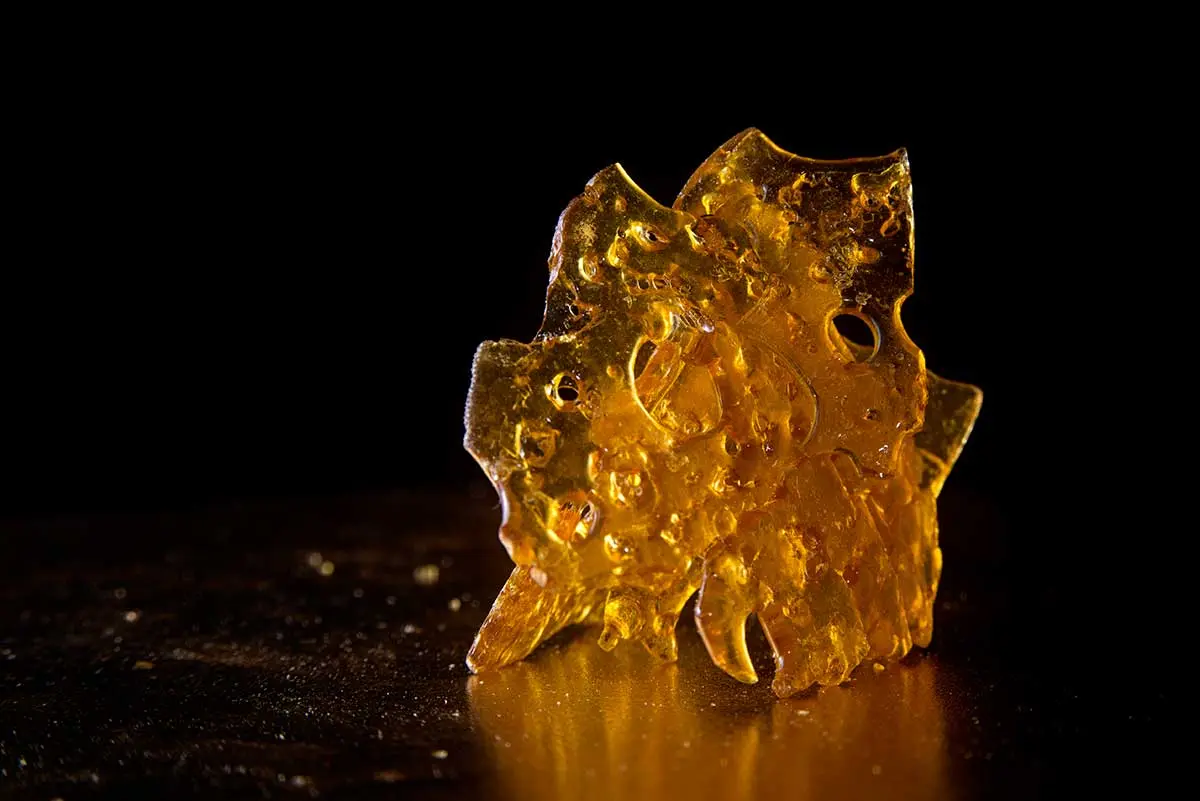
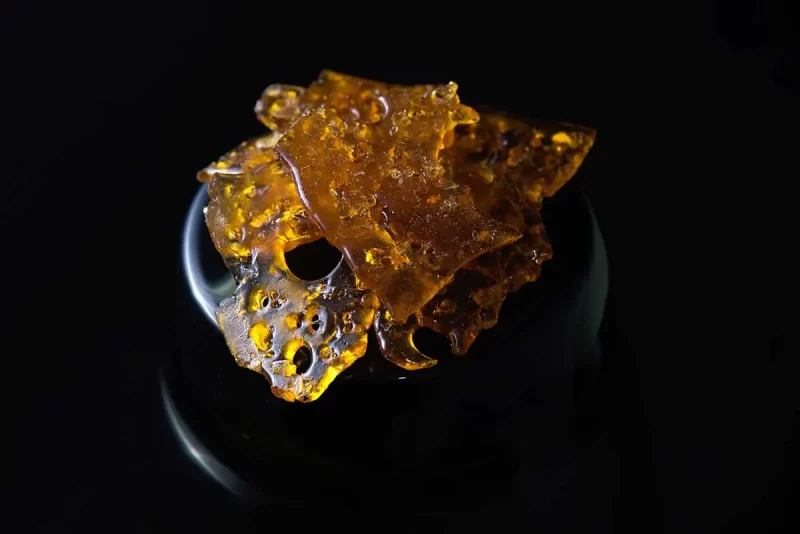
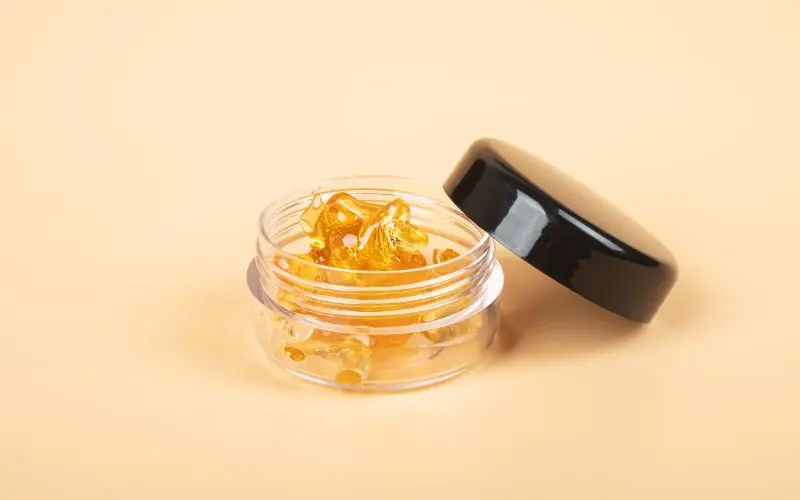
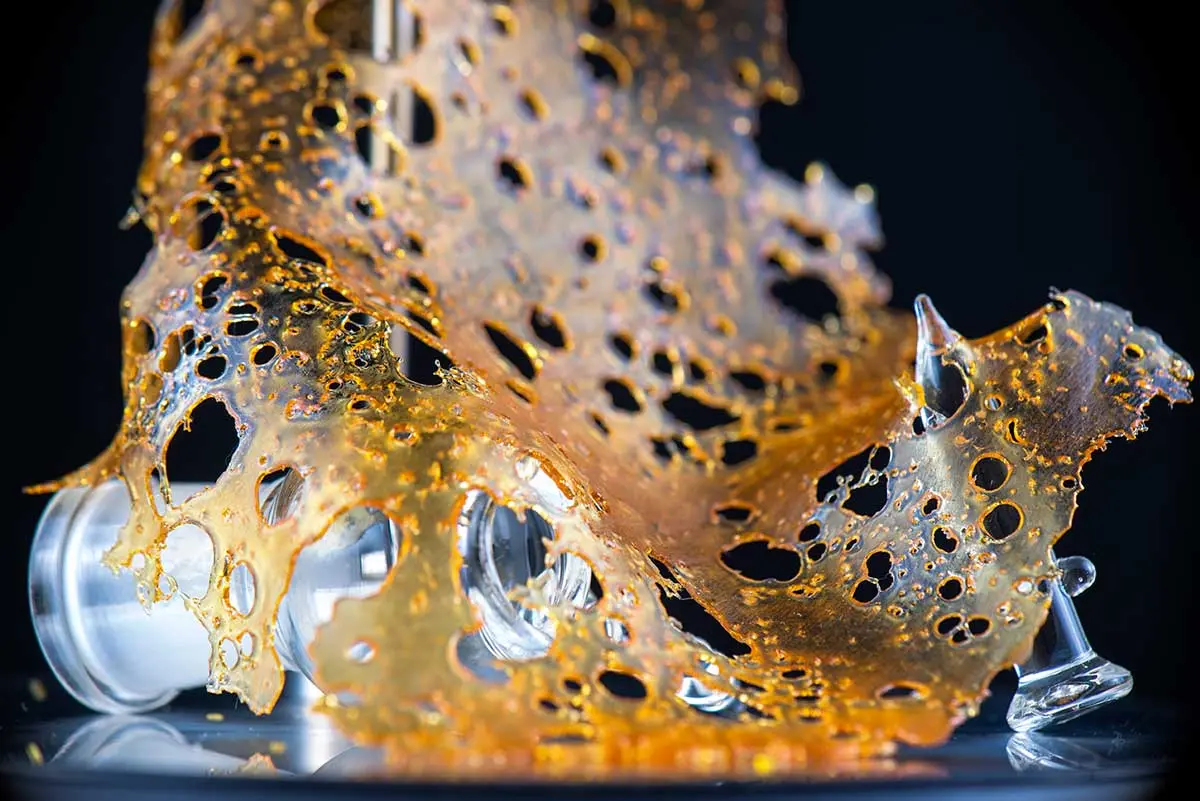
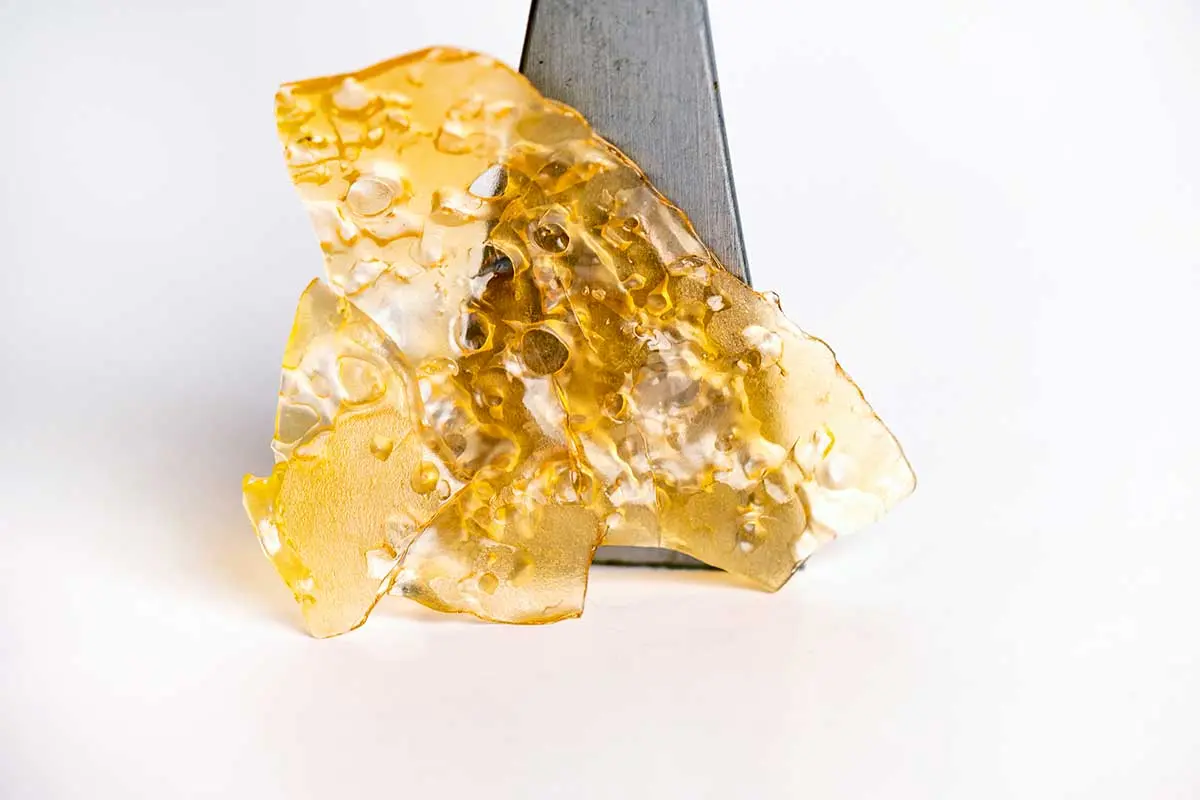
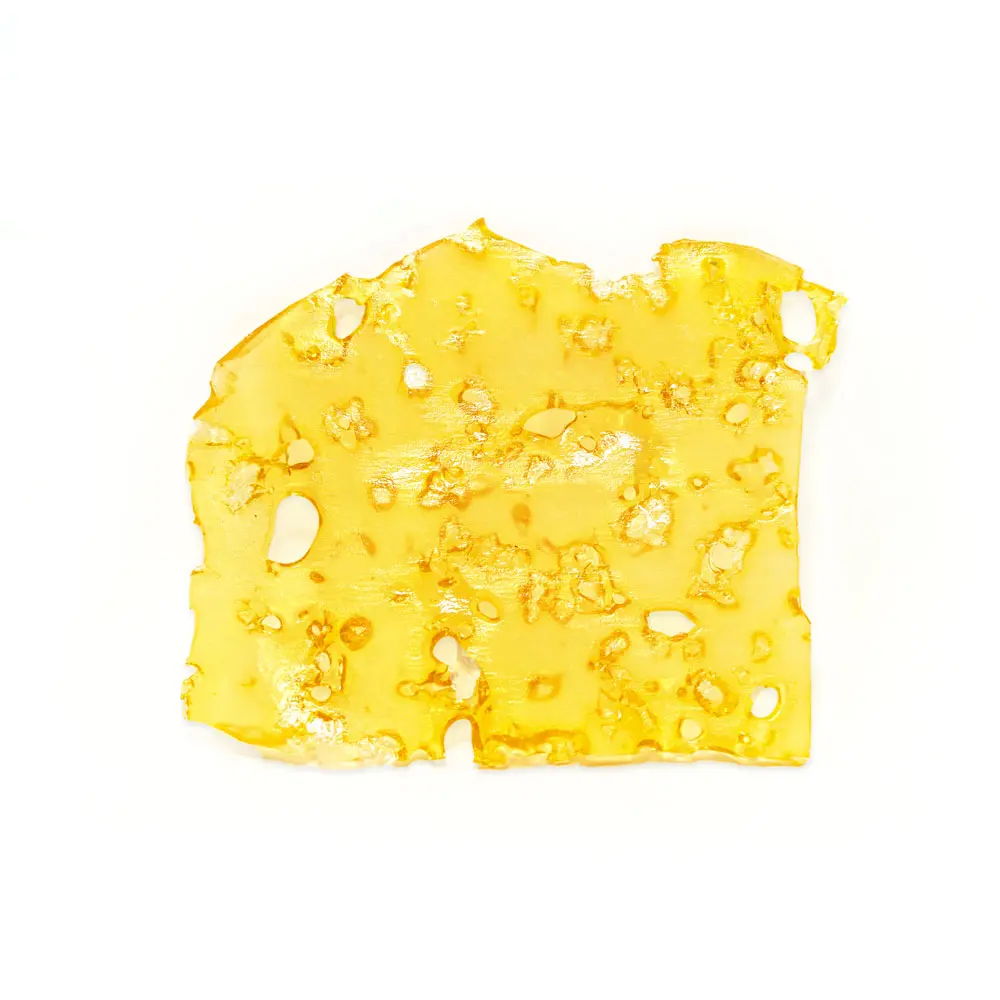
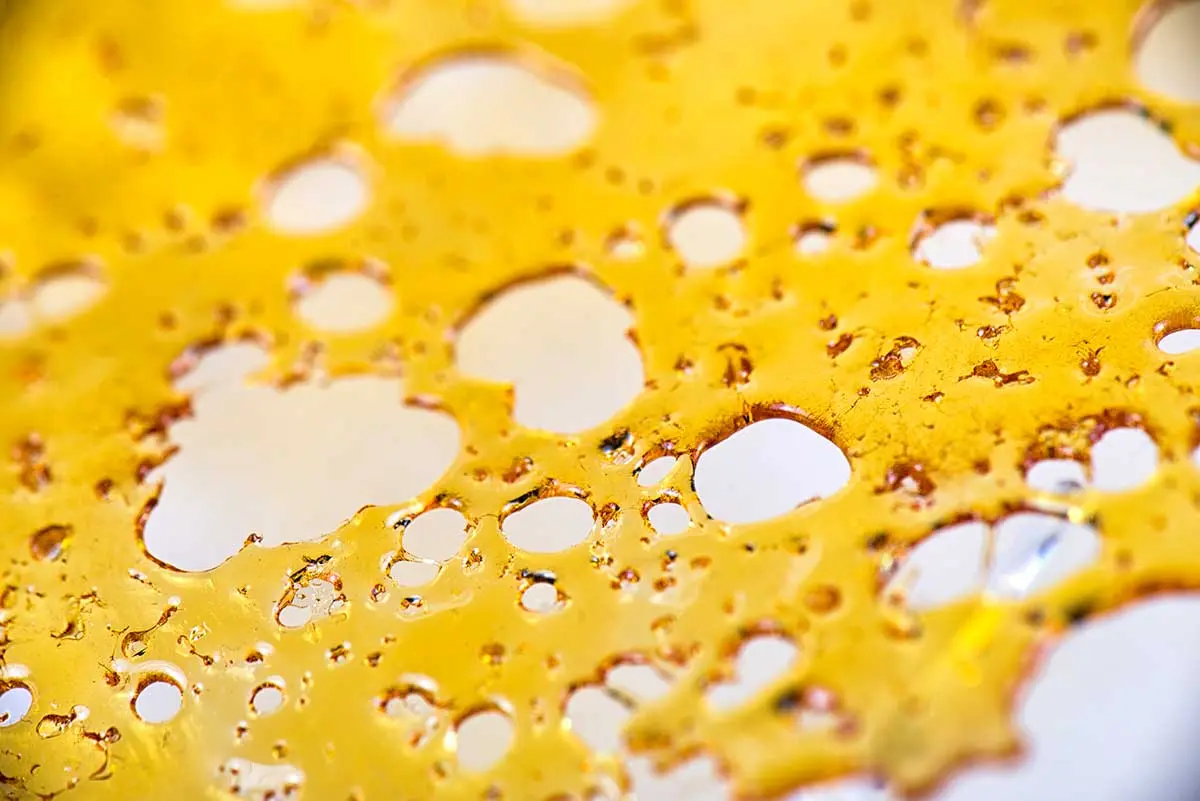
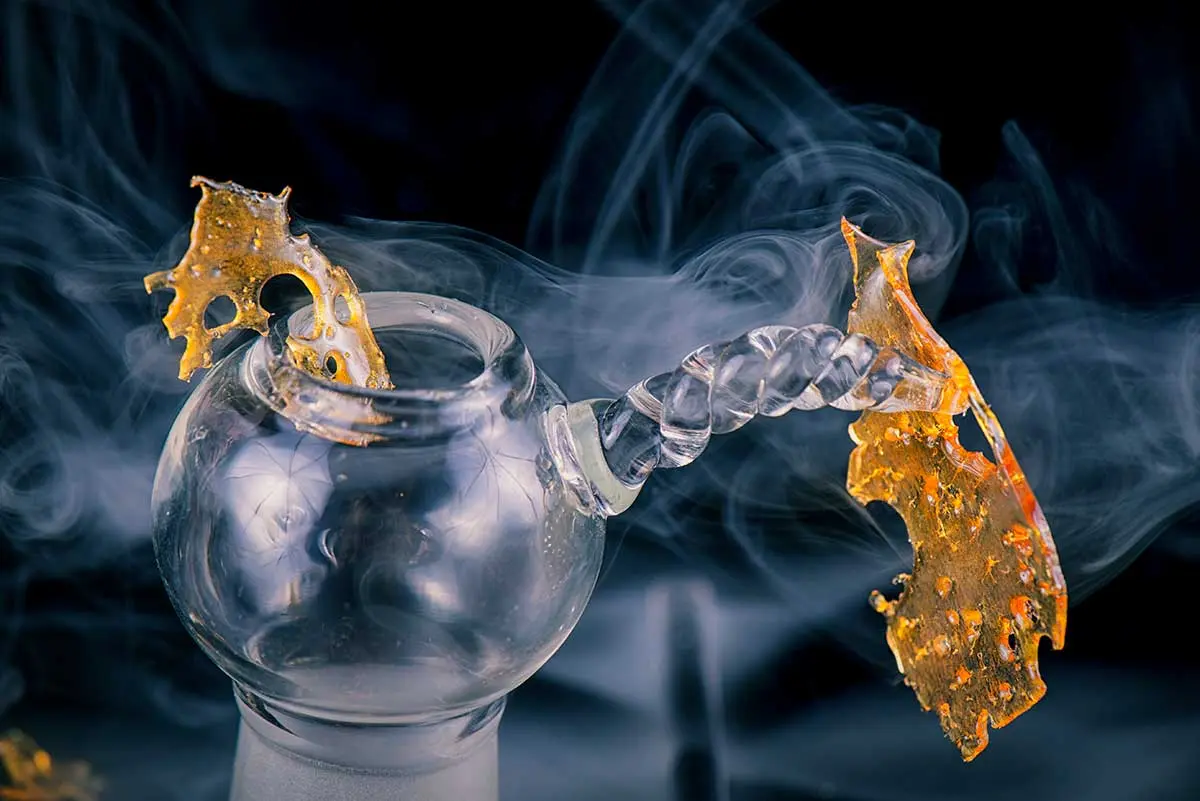
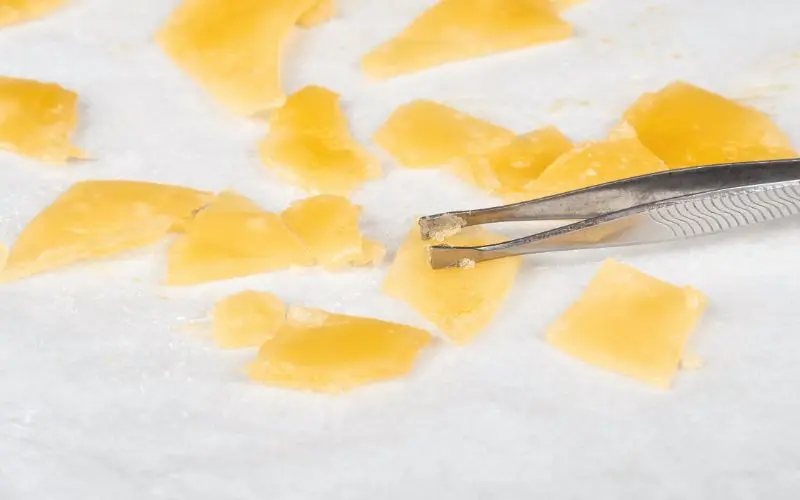
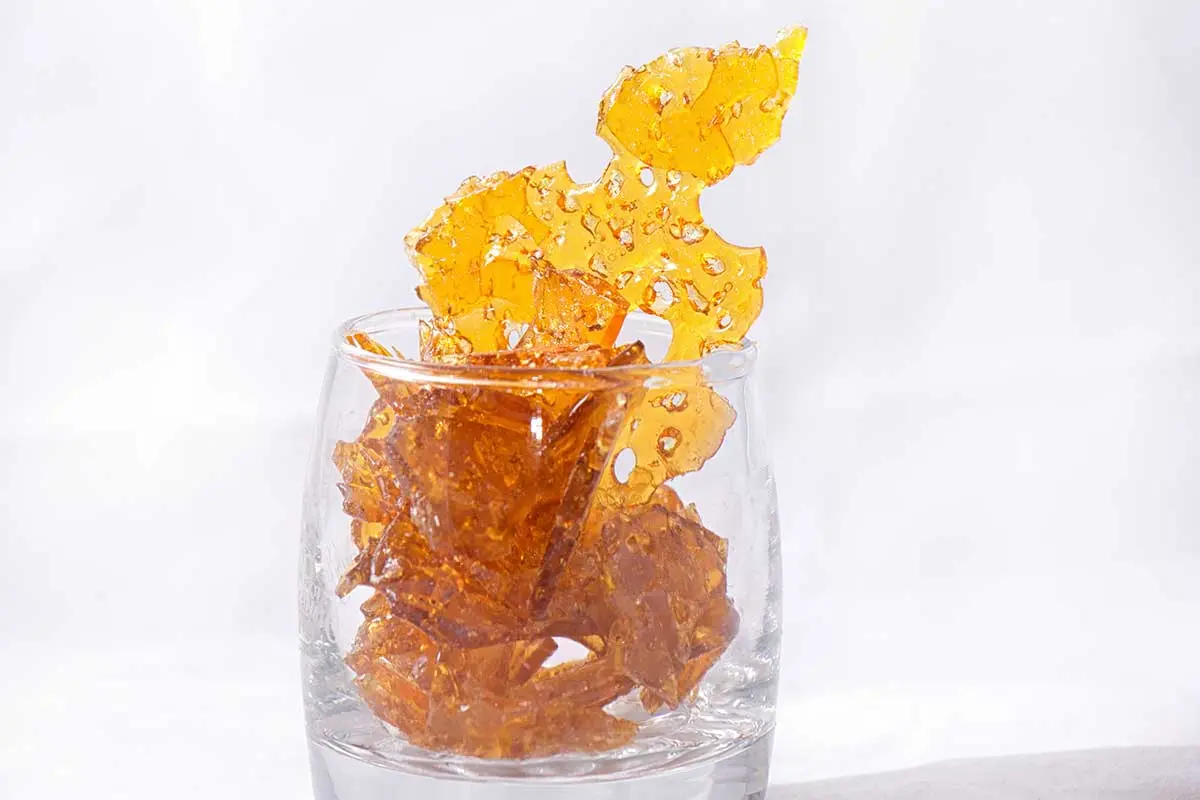
 AA WEED
AA WEED